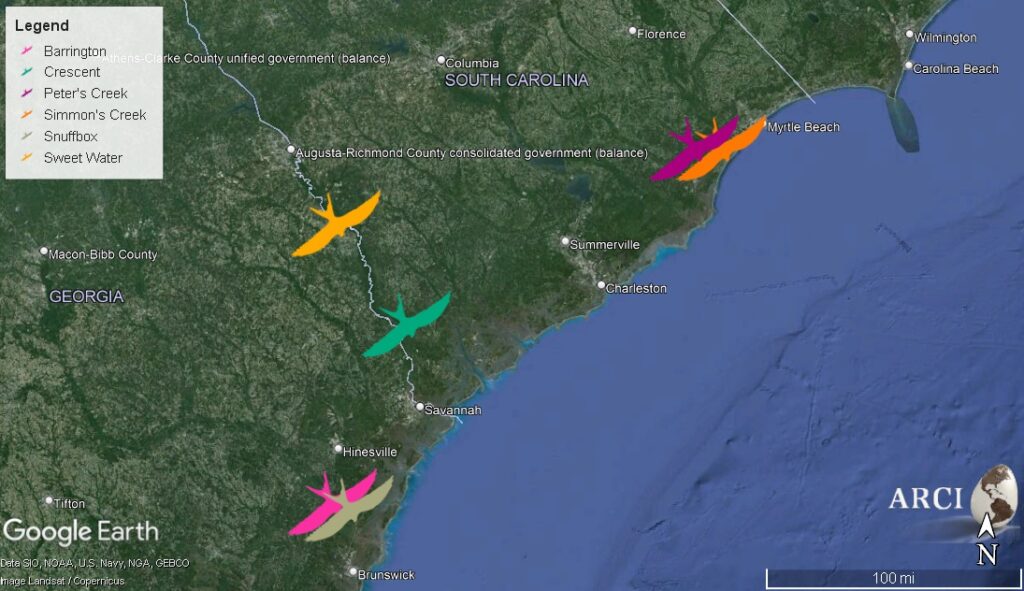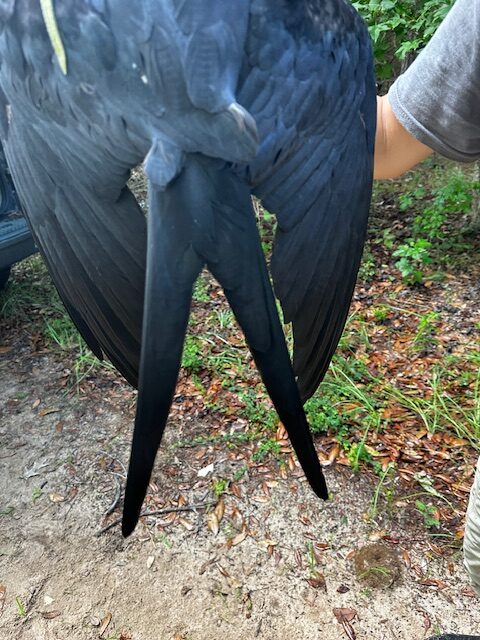Avian Research and Conservation Institute (ARCI) has partnered with International Paper (IP) and the American Bird Conservancy (ABC) to work with forestry companies like Resource Management Service (RMS), Forest Investment Associates (FIA), White Oak Forest Management, and PotlachDeltic Corporation to support the study of Swallow-tailed Kite habitat use in South Carolina and Georgia. Our colleague Dr. Jennifer Coulson at Orleans Audubon Society is also contributing to this effort tracking Swallow-tailed Kites on a number of different properties in Louisiana and Mississippi. The coalition expanded this year with a grant from the National Fish and Wildlife Foundation (NFWF) through their Forestland Stewards partnership with IP. The grant titled, Birds: Ambassadors for Enhancing Conservation Value on Private Forest Lands, focuses on Swallow-tailed Kites and Red-headed Woodpeckers with Mississippi State University leading the woodpecker research.
This broad coalition consists of companies that purchase wood fiber, the landowners who actively manage their forests, and conservation organizations that provide expertise and guidance. The coalition is an excellent example of the cooperation and coordination needed to ensure our forests can support the future needs of wildlife, local communities, and the economy.

We are in our fourth year of tracking GPS-tagged Swallow-tailed Kites in the Southeastern US with this coalition. To understand the kites’ use of sustainable forests, locations from tagged kites will show their activity and locations within IP’s mill basins and we will be able to recognize their use of specific habitats for nesting, foraging, and roosting. These data will be critical to further improving the sustainable forest management techniques used by land owners that supply wood fiber to International Paper (more on Swallow-tailed Kite Forest Management Recommendations for Forest Owners). By successfully managing and creating nesting and foraging habitat conditions for the Swallow-tailed Kite, many other wildlife species that share the same habitat also will benefit.
Introduction to the flying research team and updates:
Peter’s Creek: Male, tagged in 2021, from Georgetown County, South Carolina. Fledged one chick in 2024.
Simmon’s Creek: Male, tagged in 2023, from Georgetown County, South Carolina. Made it safely back to breeding grounds and most likely had a successful nest.
Walker Farm: Female, tagged in 2023, from Georgetown County, South Carolina. Last GPS location was from her southbound flight through Costa Rica last September. We presume she died on migration.
Snuffbox Canal: Male, tagged in 2023, from McIntosh County, Georgia. Fledged one chick in 2024.
Barrington: Male, tagged in 2023, from McIntosh County, Georgia. Returned to Georgia late after a difficult Gulf of Mexico crossing and did not nest in 2024.
This year we placed transmitters on two additional adult Swallow-tailed Kites along the Savannah River basin:
Sweet Water: Female, tagged in 2024, from Burke County, Georgia. Presumably had a successful nest.

Crescent: Female, tagged in 2024, from Jasper County, South Carolina. Fledged one chick.

We’ll be following these six Swallow-tailed Kites during this pre-migration season as they move to areas where they can gorge on abundant insect food and acquire the necessary fat to prepare for their migration to South America. In the process, many of the kites find each other at communal roost sites and foraging aggregations across the southeastern U.S. before beginning their southbound migration.
We are grateful to all the partners, organizations, and volunteers that have made this Swallow-tailed Kite research possible. A big thank you to EJ Williams of ABC for many hours of nest monitoring and trapping; Georgia DNR’s Andy Day, Erin Cork, and Tim Keyes for nest finding and trap assistance; and additional trapper Kiersten Palanek of ARCI.
Safe travels Swallow-tails!
Swallow-tailed Kites were captured, banded, and tagged under the appropriate Federal and State permits.

Leave a Reply